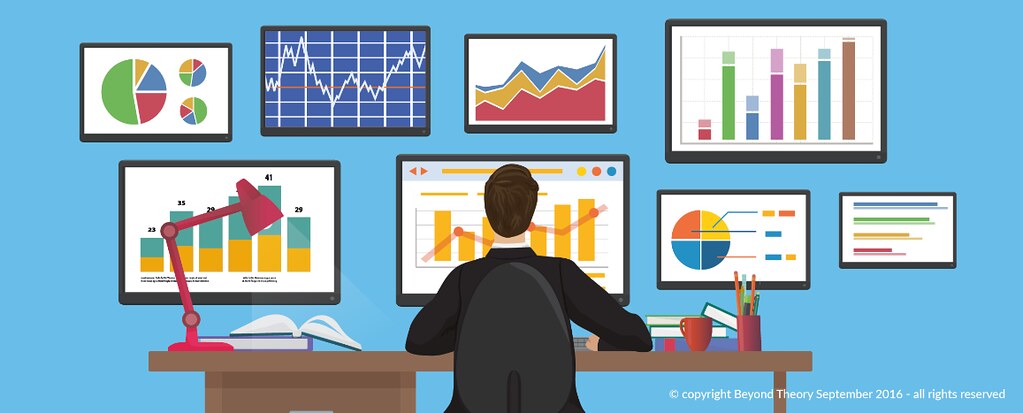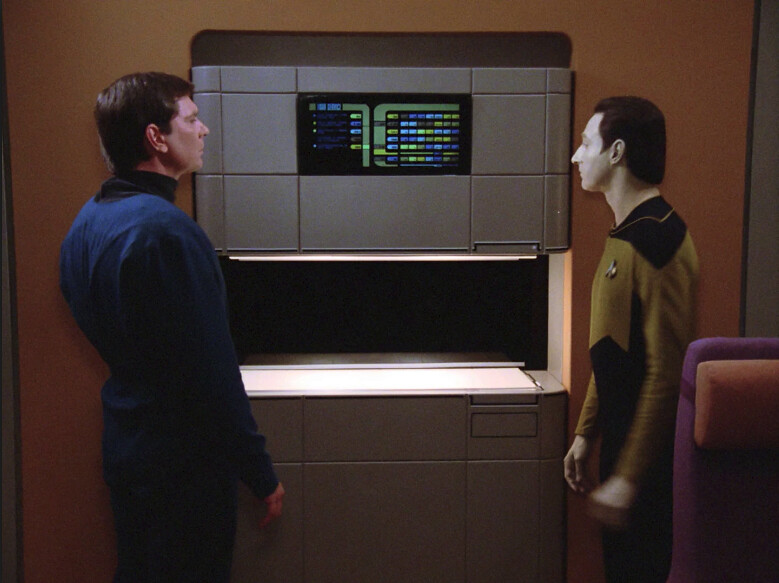Source: IUVM TECH
The world is in the midst of a gigantic 'data revolution' right now. What does that entail? There is a massive collection of data going on around us at any given moment. From the geographical location at which you are located to the subject matter which you are searching for using a search engine such as Google or Bing. What benefits might arise out of such a revolution? Many have been proposed. The overall concept to understand why such benefits arise was written about in an article titled "The 7 Industries That Benefit Most From Big Data" on the website 'Smart Collective' in 2016:
Generally, the more data you have, the more specific and accurate insights you’ll be able to generate, which is why big data has become such a powerful tool (and buzzword) in recent years
More data points equals more accuracy. Which promotes the largest benefit which serves as a feedback into all of the industries mentioned in the article above: 'artificial intelligence.' A pathway toward the benefits of artificial intelligence exists and is currently being taken by technology groups around the world. On this pathway toward 'artificial intelligence' playing a larger role in our society has been the concept of 'deep learning':
Deep learning (also known as deep structured learning or hierarchical learning) is part of a broader family of machine learning methods based on learning data representations, as opposed to task-specific algorithms. Learning can be supervised, semi-supervised or unsupervised.[1][2][3]Deep learning architectures such as deep neural networks, deep belief networks and recurrent neural networks have been applied to fields including computer vision, speech recognition, natural language processing, audio recognition, social network filtering, machine translation, bioinformatics, drug design, medical image analysis, material inspection and board game programs, where they have produced results comparable to and in some cases superior to human experts.[4][5][6]Deep learning models are vaguely inspired by information processing and communication patterns in biological nervous systems yet have various differences from the structural and functional properties of biological brains (especially human brains), which make them incompatible with neuroscience evidences.[7][8][9]
Again, the amount of data which serves as an 'input' will greatly affect the accuracy of the 'output' the intelligent (computation) answer given to us after the algorithm is executed.
How does all of this play out in the immediate future?
One example is the field of medicine. During a recent break, I was perusing through Facebook and found the following video by an organization called 'Forward'. The video below gives us a glimpse into technology which has already been developed and is out on the market right now. A glimpse of a 'future visit to the doctor' for a health check up. The video is less than 10 minutes in length and worth watching.
Wow right? For those who are uninterested in viewing the entire video here are the basics:
1) No receptionist to check in with. Just an equivalent of an iPad.
2) A Body scan with infrared radiation. While placing a single hand on a sensor, blood oxygen levels, heart rate, metabolic rate, and a body composition -- fat tissue, muscle and bone tissue.
3) Up to 3 visits normally to the center per month. Although, a patient may come and get a body scan anytime. Remember, more data more accuracy.
4) A Body scan creates a 3D model of your body.
5) The Information gathered in the body scan is synced with exam room digital display (i.e. monitor, tv screen) at which time the patient can view results with a physician. Additionally, the information is also synced with the mobile app on your smartphone.
6) Patient goes into exam room and discusses data.
7) Patient and physician review body scan data and blood work (all on the same day) to come up with a plan to achieve health goals which lead to better health.
8) Planning is individual based. No two plans are equal.
Having the ability to reduce time or redundancy with having an on site laboratory (for blood work), a visit to the 'futuristic physician' provided by 'Forward' is greatly enhanced. Plus, as pointed out in the video above, the language which enters into the patient file is the patient's own language -- which is recorded on the screen during discussion with physician. Additionally, all data and discussion is forwarded to your mobile app for your personal viewing and stay plugged into continuously. Awesome. This is the future of medicine.
Conclusion...
The data revolution has the ability to transform our daily lives in many ways. As shown in the video above, the access of big data in real-time is effective in treating an individual patient with the patient's own needs based on the data collected. Additionally, that data is compiled with the ability (upon patient approval) to be used in conjunction with other patients for research and discovery purposes.
One main obstacle with the deluge of big data are the different file types in which the data exists currently. In order to make meaningful discoveries using the big data files, the processing/algorithms need to be able to read the file format. With the collection of data in this forma (a single format), this represents a solution to an existing problem.
Of course, that means still processing old data from decades in the past. Although, after processing old data and combining it with new data compiled in the new format, powerful advances will be able to be made by mining the data for medical research and drug discovery purposes (to name just two). The future of medicine is truly exciting and should be embraced by each of us.
Related Blog Posts:
What is the difference between General Anxiety Disorder and Trump Anxiety Disorder?
NIDA Director Nora Volkow: How Health Communicators and Journalists Can Help Replace Stigma with Science
NIH Director Francis Collins Makes A Statement Regarding Sexual Harassment In Science
National Institutes of Health - Anti-Sexual Harassment Web site
National Science Foundation Sexual Harassment of Women Study
Thoughts: What Does National Institute of Health Director Francis Collins get asked in front of Congress?
Parameters: What is the 'mission' of the National Institute for Aging?
NIH Director Updates Congress On Research Progress
Dr. Francis Collins and Bill Gates Discuss Global Health And Genomics
How Much Do New Drugs Cost To Bring To The Pharmacy Counter?
Is Disease Or Treatment Different In Women?
Unraveling The Resistance Of Antibiotics!
How Do Chemists Discover New Drugs? A Brief Introduction!


